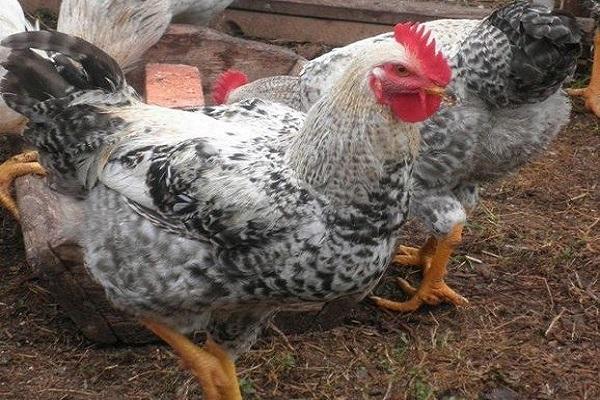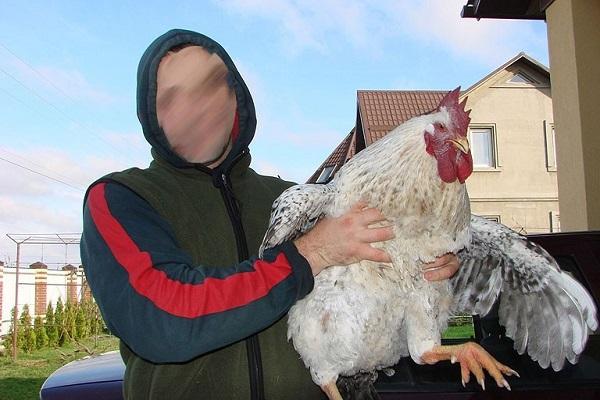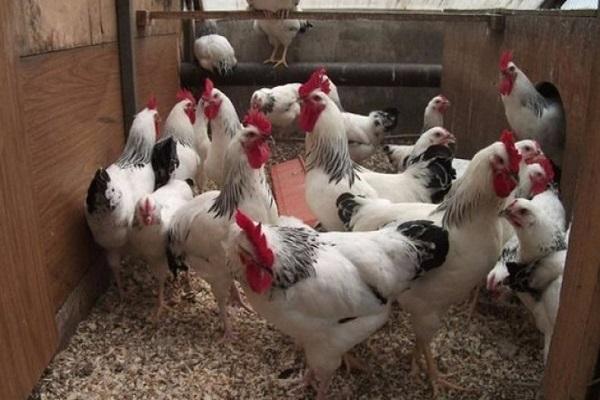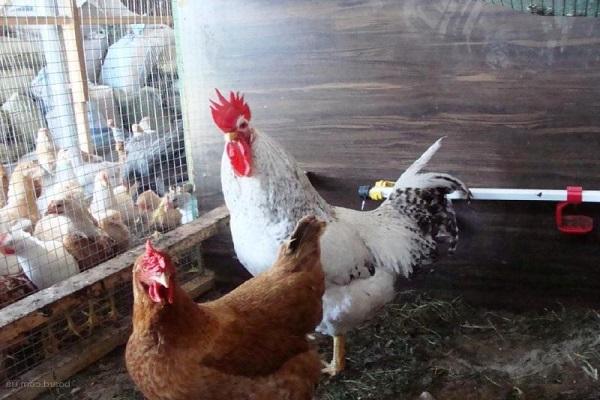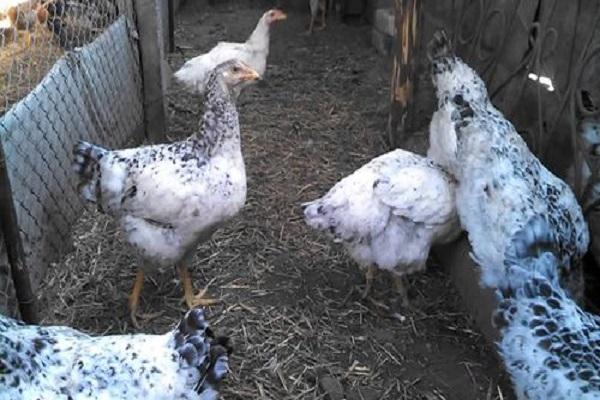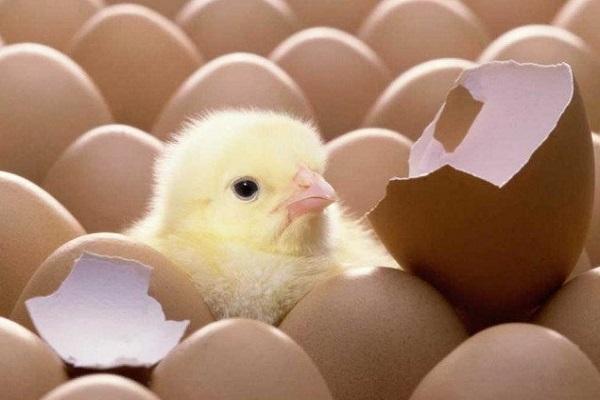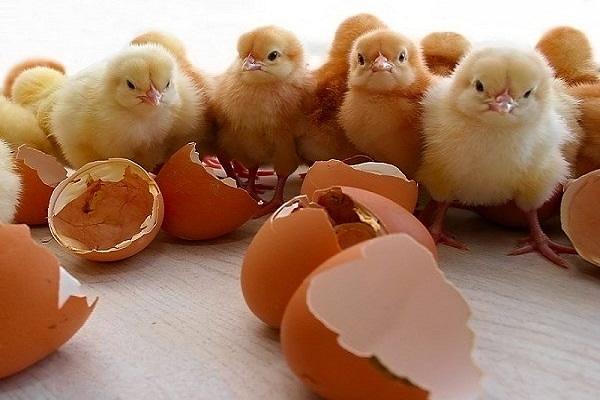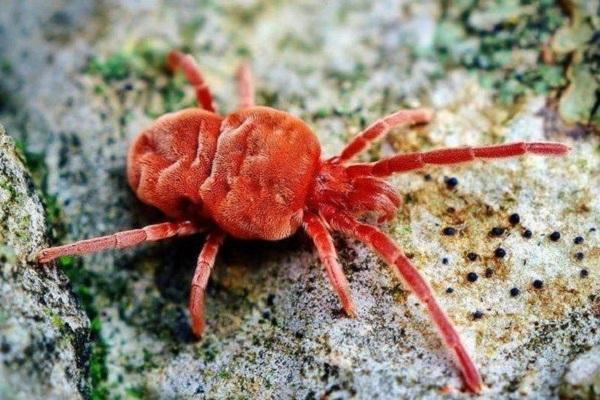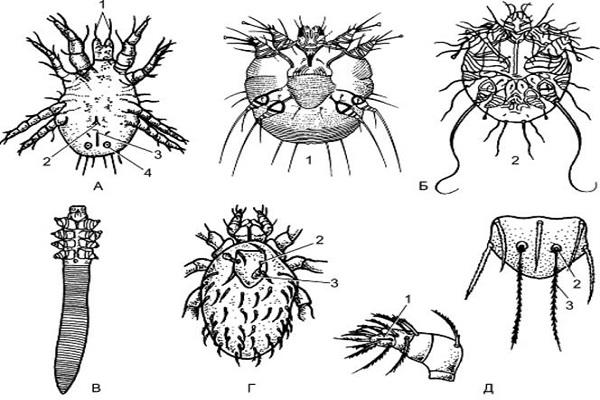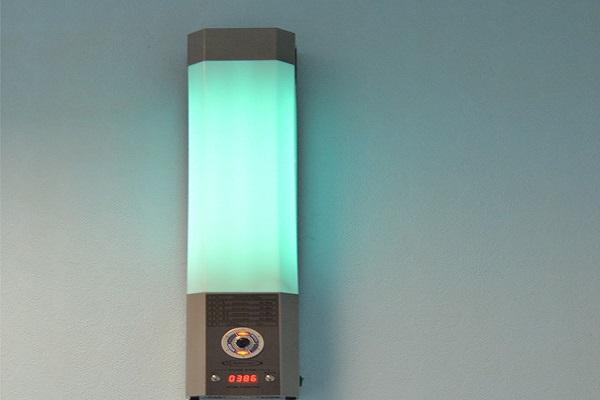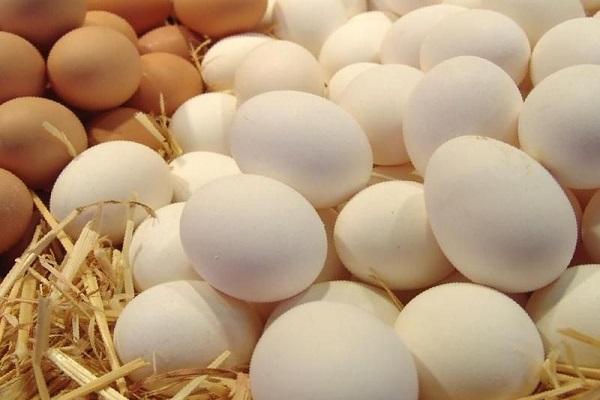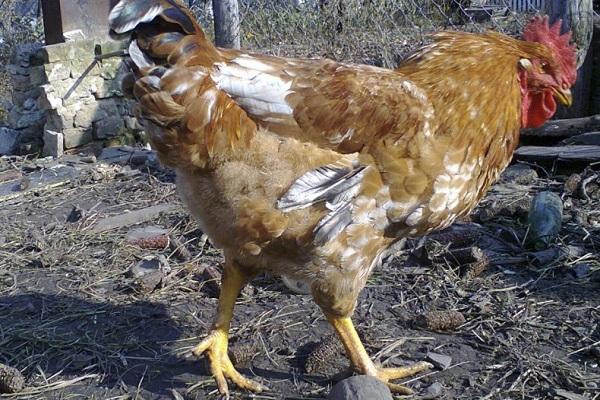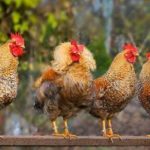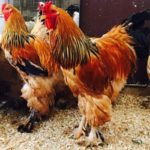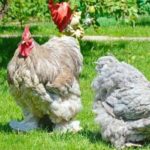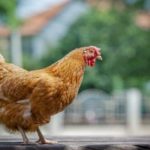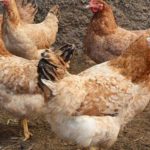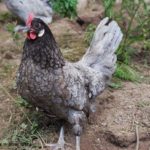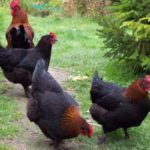Master Gray cross chickens are of the egg-meat type. They produce a large number of eggs; an individual weighs on average 4-6 kg. The bird takes root well in society with humans and other breeds. They are also easy to care for. The only drawback is the heterozygosity of the cross.
- Origin story
- Description and characteristics of the Master Gray breed
- Appearance
- Metrics and Productivity
- Character of birds
- Molting and break in egg production
- Specifics of keeping chickens
- In a home chicken coop
- In cells
- Feeding rules
- Chickens
- Nutrition of an adult herd
- Breeding
- How to get offspring
- Hatching egg
- Incubation
- Caring for young animals
- Culling weak individuals
- Diseases and prevention from them
- Red chicken mite
- Chicken feather mites
- Acariform parasites
- Disease Control
- Prevention
- Main advantages and disadvantages
- Price
- Analogues of meat-egg crosses
- Pharma color
- Tetra – N
- Redbro
Origin story
The Master Gray or Master Grizz chicken breed was bred by French scientists under the leadership of the Hubbard company. The company has several branches in different countries and has been raising birds for over 100 years. They are suitable for growing in small areas and farms. Chickens have both high egg production and meat body type.
Description and characteristics of the Master Gray breed
The description of the breed includes the appearance of the bird, the character of the hens, productivity, molting and break in egg production.
Appearance
These are large birds, the plumage is white with black spots. They note wide yellow paws, large toes, a bright red comb and chin. The beak is small yellow. The body is wide, long, large back. Gray coloring predominates on the tips of the wings and tail.
Important! Males and females are almost the same, but they are always larger.
Metrics and Productivity
Master Gray belongs to the meat and egg breeds. One female weighs 4 kg, and one male weighs 6 kg. In one year, 200 eggs. The average weight of one egg is 65 g. The shell of eggs is brown or light beige. The survival rate of young chickens is 98%.
Character of birds
Master Gray chickens are calm, friendly, and do not show aggression towards surrounding animals and other birds. They easily go into the hands of the owner, which simplifies the process of examining and eliminating signs of the disease.
Birds take root well in open houses and cages.
Molting and break in egg production
Chickens begin molting 7-8 months after birth.During this period, their egg production decreases and may even stop completely. To help birds survive this period, they are fed with special nutritional supplements.
Specifics of keeping chickens
Master Gray chickens are suitable for keeping in a home chicken coop and in a cage. However, it is worth considering their large size when placing them.
In a home chicken coop
Birds can easily tolerate air temperatures from 5 to 28 °C. In winter, they do not lay eggs, so it is recommended to insulate the chicken coop. Every day they have walks so that the chickens can walk in the greenery and peck at insects and worms.
In cells
Cages must take into account the size of the chickens when placing them. At 1 m2 no more than 2 individuals are accommodated. They take root well in cages, but when kept in a chicken coop they produce more eggs, and when kept in cages they produce more meat.
Feeding rules
For adult chickens and chicks, the feeding method differs. For each of them, a separate menu is drawn up and the diet is enriched with certain microelements.
Chickens
From the first days, feeding young chicks begins with cottage cheese, eggs, vegetables, herbs, and finely ground grains. The supply of food must be constant and regular. The chicks should not be hungry. From 1.5 months they are transferred to adult food.
Nutrition of an adult herd
Cross is not picky about care. Feeding is carried out according to the feeding table for egg-meat breeds. However, you should not overfeed them; individuals are prone to gaining excess weight. During the warm season, they are kept on two meals a day. In winter, they switch to a more dense diet:
- High-protein feeds are used, which promote weight gain.
- Corn and seeds are reduced, as they contain a lot of fat, and for poultry this serves as an increased calorie content.
- Diets are carried out for chickens with incipient obesity.
Breeding
Master Gray was obtained by crossing two homozygous breeds. The chicks are heterozygous, so the next generation may not have the same set of characteristics as the parents.
How to get offspring
A male and a female from different parents are selected for mating in order to avoid abnormal development in future chicks. Selected individuals are walked together to prevent interbreeding with other birds. After leaving the clutch of eggs, the rooster is sent to a common pen.
Hatching egg
Females of this breed do not have maternal instinct. They refuse to hatch eggs. A chicken lays eggs every day or every other day. Therefore, you have to use an incubator. The size of one egg is about 65 g.
Important! Descendants of the Master Gray cross will not always produce chickens with the same characteristics.
Incubation
Incubation takes 3 weeks. The eggs are placed in an incubator. On certain days, the temperature is increased or decreased, and turned over on different sides. For artificial incubation, a scheme is followed, which is divided into 7 periods.
| Periods | Temperature, °C | Humidity | Cooling | Rotation, once a day |
| First | 38,5-39 | 75-85 | Do not refrigerate | Do not turn |
| Second | 37,8-38 | 75-85 | Do not refrigerate | 6-10 |
| Third | 37,8 | 70-75 | 2 times for 5 min. | 6-10 |
| Fourth | 37,8 | 65 | 2 times for 5 min. | 6-10 |
| Fifth | 37,8 | 50-55 | 2 times for 10 min. | 6 – 10 |
| Sixth | 37,7 | 50 – 55 | 3 times 10 min | 6-10 |
| Seventh | 37,4 | 70 | 2 times for 5 min. | Do not turn |
Caring for young animals
The descendants of the colored broiler tolerate transportation well, take root easily, and have a high survival rate. Chickens are cared for as follows:
- It is necessary to ensure a constant supply of food and water.
- The food is enriched with protein and minerals.
- After a month and a half, the chicks are transferred to adult food.
Culling weak individuals
After hatching from the eggs, the chicks are weak. To determine their strength, it is necessary to observe several weeks. Then culling is carried out:
- The strongest individuals are left for further cultivation.
- If possible, weak chickens are transferred to a separate enclosure.
- If there is no separate cell, they are marked with paint, a chip or another method.
- Strong chickens are kept for breeding, meat or eggs.
Diseases and prevention from them
If kept in the wrong conditions, there is a chance of diseases occurring. When infection penetrates, the number of eggs laid decreases and proper weight gain does not occur.
The first signs appear gradually, it is necessary to carry out timely treatment.
Red chicken mite
Birds are attacked at night; ticks feed on the blood of chickens. The insects have a red-brown body and white spots on the back. In Russia they are common in poultry houses and on wild birds. In chickens, egg production decreases, anemia appears, and weight decreases.
Important! The tick attacks people and is a carrier of encephalitis and Lyme disease.
Chicken feather mites
They live in chicken coops and attack mainly at night. They feed on the blood of birds and settle in the sockets of feathers located under the wings and on the neck. In advanced stages they appear in the eye area and nostrils. The chicken loses feathers and loses weight rapidly.
Acariform parasites
Small gray parasites that feed on the blood of chickens. They penetrate under the feather area of the body, create discomfort for the bird, its appetite and weight decrease, and the number of eggs laid decreases.
Disease Control
For treatment, certain measures are used:
- Isolate affected chickens.
- The poultry house is disinfected, and the chickens are temporarily transferred to another place.
- All equipment with which the chickens have been in contact is calcined.
- Tools are heated.
- Chickens are treated with a chemical: “Ecofleece”, “Iretrium”, “Ivermerk”, “Iretrium”.
- Treat with folk remedies: vegetable oil, birch tar, wormwood, mint, parsley, garlic, wood ash.
Prevention
For prevention, quartz lamps or ultraviolet recirculators are installed. They purify the air and destroy parasites. The equipment is turned on when the birds are on a walk. The procedure is carried out 2-3 times a day.
Main advantages and disadvantages
The Master Gray breed has its advantages and disadvantages. Benefits include:
- High egg production, up to 200 eggs per year.
- Used as a meat breed, the female reaches 4 kg in weight, and the male 6 kg.
- Unpretentious in care.
- They get along well with people and other birds.
- Chick survival rate is 98%.
Among the disadvantages, they note the impossibility of obtaining 100% offspring like the parent individuals.
Price
One egg of this breed costs 50 Russian rubles. A one-week-old chick costs 100-150 rubles, a two-week-old chick costs 150-200 rubles. When purchasing eggs, you must have your own incubator. During transportation, the shell can be damaged or broken, so it is more profitable to buy chicks.
Two-week-old chicks are stronger than one-week-old ones. Chick survival rate is 98%. Therefore, young individuals produce up to 200 eggs per year.
Important! The cost of chicks is low, it is recommended to buy at least 5 pieces in case some die.
Analogues of meat-egg crosses
The Master Gray breed has several analogues.
Pharma color
Similar in size to Master Gray. The feather color is brown. Laying hens produce up to 250-280 eggs per year. From 4 months of age they begin to lay eggs.The weight of the female is 3-4 kg, and the male is 4-6 kg.
Tetra – N
The birds are medium in size and belong to meat-egg crosses. About 280 eggs are laid in one year. The average weight of one chicken is 3.5 kg.
Redbro
Large chickens that have an average egg production of up to 160 eggs per year. Laying hens lay eggs starting at 5-6 months. The female weighs about 3 kg, and the male 4 kg. Birds gain weight quickly.

